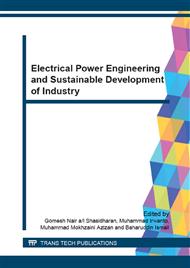p.430
p.435
p.440
p.445
p.450
p.457
p.462
p.467
p.473
Characteristics of Dye-Sensitized Solar Cells Using Dye from Pitaya Fruit
Abstract:
Dye-sensitized solar cell (DSSC) consists of TiO2 nanoporous coating which acts as a photo electrode, a sensitizer of dye molecules soaked in the TiO2 film, liquid electrolyte and a counter electrode. This paper focuses on the usage of a sensitizer from the Pitaya fruit. Pitaya or commonly known as dragon fruit (Hylocereus polyrhizus) was extracted and used as a sensitizer to fabricate the dye sensitized solar cell (DSSC). The photoelectrochemical performance of Pitaya based solar cell shows an open circuit voltage (VOC) of 237 mV, short circuit current (ISC) of 4.98 mA, fill factor (FF) of 0.51, solar cell efficiency (η) of 0.70 % and has a peak absorbance rate of 2.7 at 550 nm. The photoelectrochemical and UV-Visible light absorbance performance of Pitaya-DSSC shows good potential in future solar cell fabrication.
Info:
Periodical:
Pages:
450-454
Citation:
Online since:
September 2015
Authors:
Keywords:
Price:
Сopyright:
© 2015 Trans Tech Publications Ltd. All Rights Reserved
Share:
Citation:


